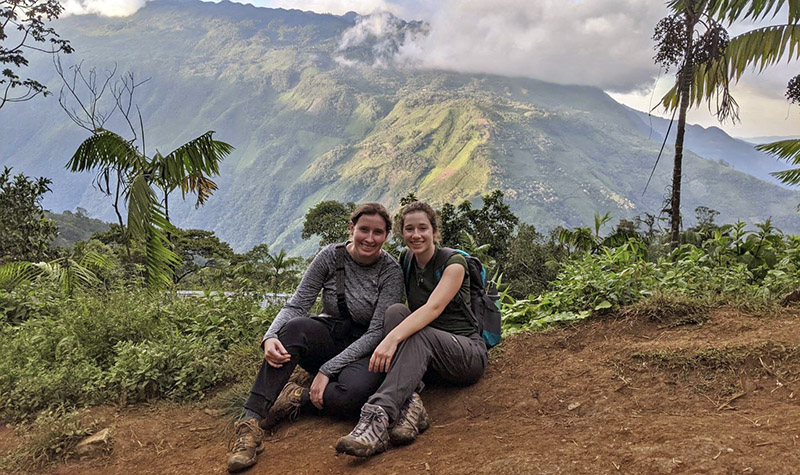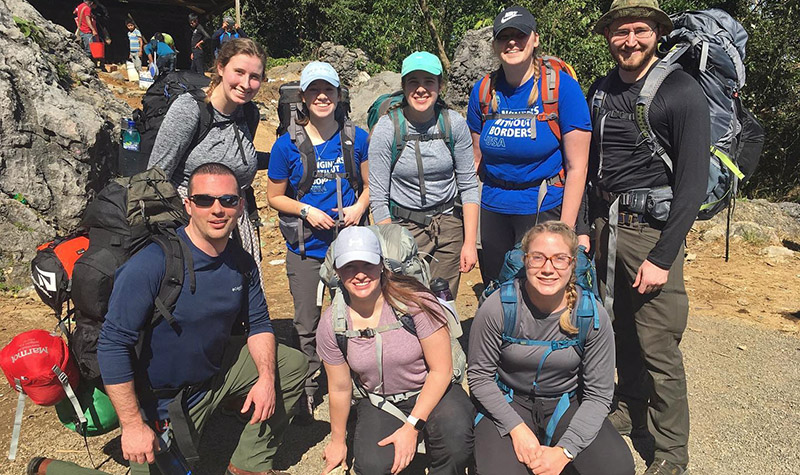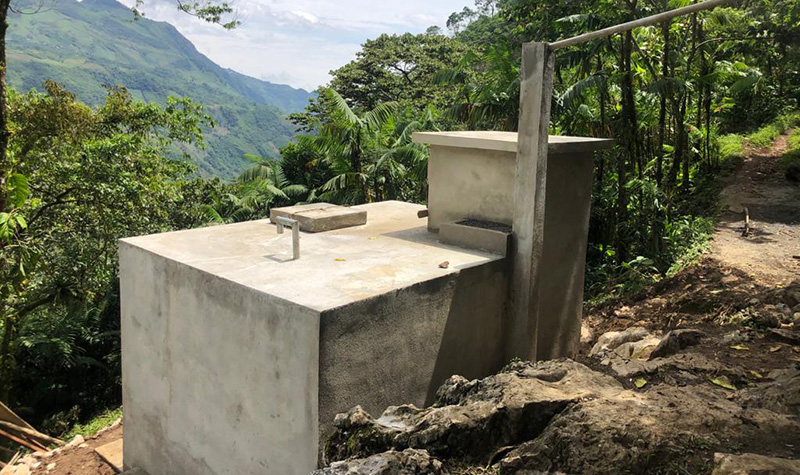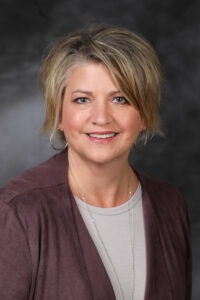To fetch a pail of water — and a scholarship, internship and job
UND civil engineering scholarship winners travel to Guatemala to help remote community get clean water

Hauling a heavy backpack up a steep and “jungle-y” mountain path in extreme heat and punishing torrential rains wasn’t exactly a vacation. But then again, it technically was for then-sophomore UND civil engineering students Nicole Dolejs and Savana Schauer.
“We were very muddy at all times,” Dolejs said. “There were a lot of wipeouts on that trip.”
“And a lot of bruised butts,” Schauer added with a laugh.
The students from Lakeville, Minn., and Mandan, N.D., respectively, were among a team of eight who spent their 2019-20 winter break in the remote Guatemalan village of Pambon.
They were part of UND’s student chapter of Engineers Without Borders, and they were there to get to the bottom of why the children of the small village — population 500 — kept on getting sick. Both the locals and the future engineers suspected the drinking water was to blame, and they were right. But what no one knew going in was exactly what the scope of the $30,000 project would be.
“It wasn’t super-defined when we started out because we hadn’t been to the community yet,” Dolejs said. “We didn’t know what the people there wanted, what we’d be able to accomplish or what was even feasible. We just knew we were going to develop some type of sustainable, low-cost water treatment solution for them.”

Community input
The proposed solution would come after long nights of sleeping on the concrete floor of the village school, and even longer days of hiking up and down the slippery slopes to conduct water quality tests at the village’s three natural springs.
“One of the other big pieces we did in the community was we went to everyone’s house and asked them a list of questions,” Schauer said. “We wanted to get a better idea of what they wanted and not necessarily what we thought they should have.”
And what the villagers wanted was not only easier access to clean and safe water, but also a place where they could gather to visit while making quick work of their laundry.
“There was a social aspect to it,” Schauer explained.
That made even more sense when they learned just how much time the village women and children devoted to a resource and household chore so many Americans take for granted.
With the nearest transportation miles away from the village and no such thing as electricity or running water, every drop they used for cooking, cleaning and consumption had to be collected on foot and by bucket, pan or pop bottle.
And to make matters worse, the students discovered the best of the village’s existing water storage tanks was 30 years old and had no working taps. This sometimes left the villagers to rely on the dribble of a single overflow pipe near the top of the reservoir. It was tedious and time-consuming.
“It was really a challenge and a major component of the woman’s life in that village,” Dolejs said. “The consensus was they spent most of their day going to collect water and then boiling it to clean it. A new system, at least, would make accessing the water easier.”

Mission accomplished
For certain, the UND students had their work cut out for them. But, they had a rough plan. They would design and build a water treatment and storage system that would incorporate clothes-washing stations and two new chlorinating tanks at the far outreaches of the village — one at the top elevation and one at the bottom — so neither end would be at a disadvantage.
Data gathered and surveys complete, they returned to UND and immediately got the ball rolling. And when the pandemic threatened progress later that year, they pushed on. Unable to return to construct the project themselves, the team reached out to an international EWB branch to hire local contractors — and the contractors got the job done.
Meanwhile, back home, Schauer and Dolejs were getting a whole lot more done. With the technical knowledge and real-world experience they had gained at UND, they both landed internships with Grand Forks’ Advanced Engineering and Environmental Services, or AE2S. They earned prestigious scholarships from the Associated General Contractors of North Dakota.
And just last month, they both signed on with AE2S for full-time jobs after graduation.

Following through
Now two years, dozens of pictures and countless Zoom sessions later, they’re also looking forward to a possible return visit to Guatemala this winter to see their water system in action.
“It’s been exciting to see everything and know it’s actually happening,” Schauer said.
Dolejs agreed. “Yeah, it feels really good to be part of something like this and see the impact good engineering can have on a community,” she said. “While we were there, so many people told us, ‘We really hope you guys are legit and for real. Others have come to help us, but we’ve never seen it happen.’
“It’s going to be so cool to go back now and see it running. We were true to our word. We delivered what we promised.”



